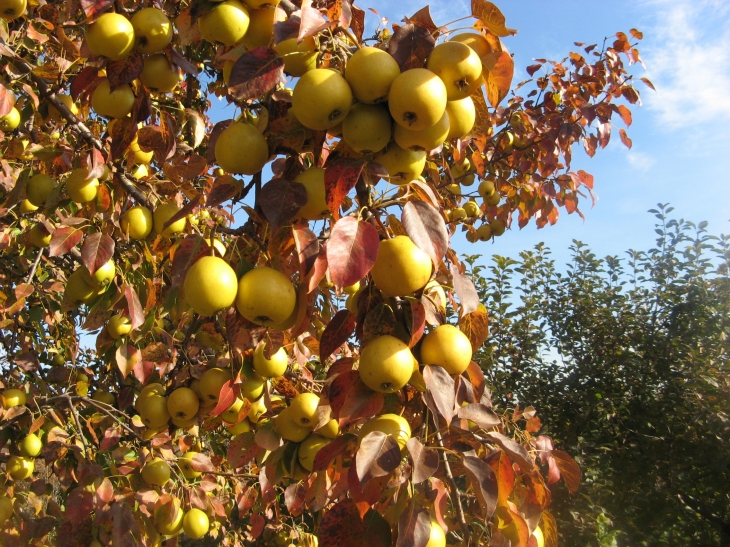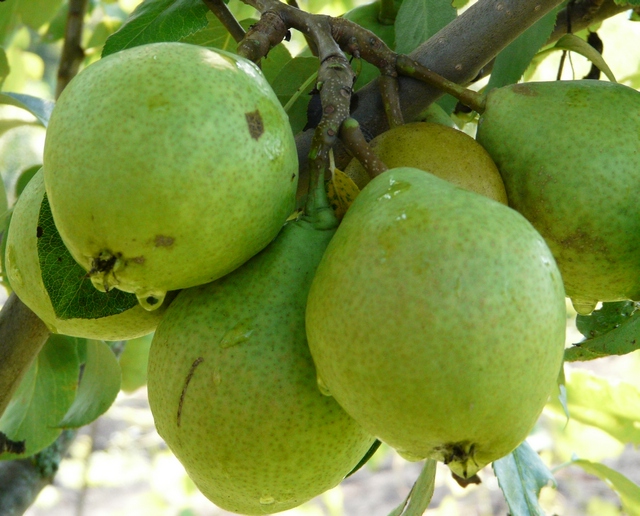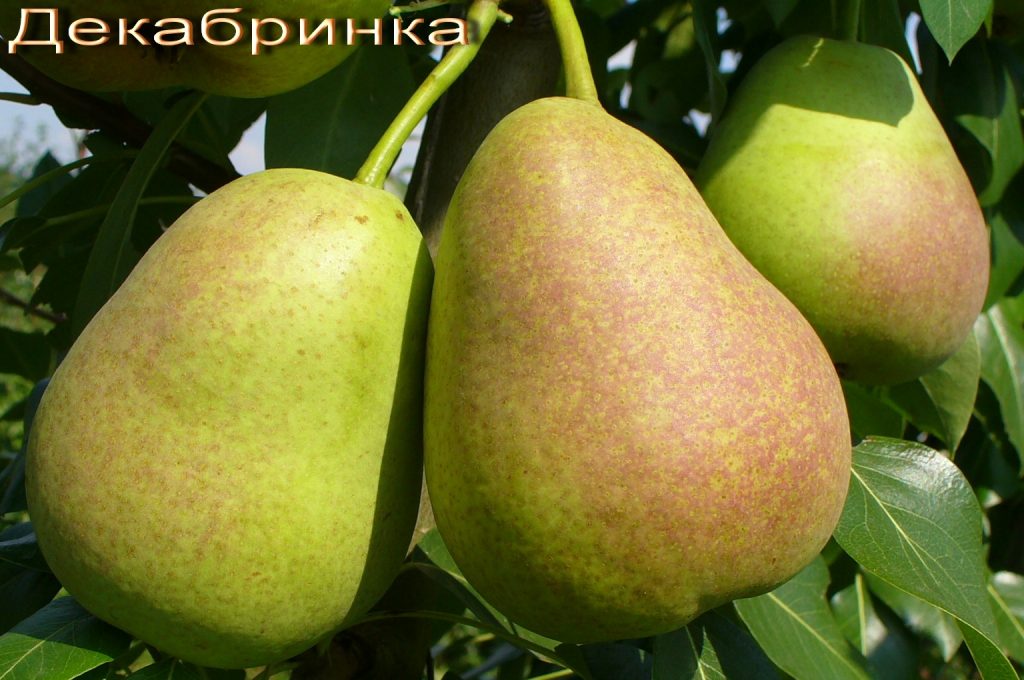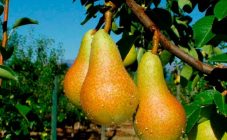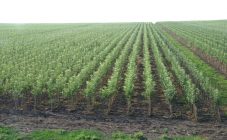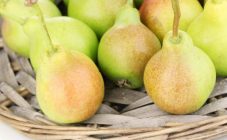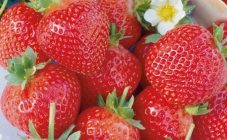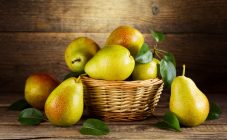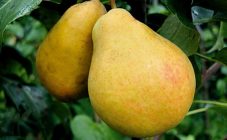Content:
The Urals are characterized by peculiar weather and climatic conditions that must be taken into account when cultivating pears. Under these conditions, the role of the variety especially increases, which must be adapted to the local climate and combine winter hardiness, disease resistance and high productivity. That is why you should find out in advance which pear to plant in the Urals and how to grow it correctly.
Pear for the Urals: the best varieties
Safe (Bere yellow improved)
The variety was obtained by mutation of cuttings of another species, Bere yellow, carried out in laboratory conditions. The main characteristic that justifies the prospects of this variety for the Urals is the very high winter hardiness of both wood and flower buds. The tree is weak, with a rounded crown. The branches are strong and strong, grow obliquely and extend upward.
The mass of fruits is average for this culture, about 110 g. In shape, the fruits are ovoid, regular, with a smooth and even skin. The main fruit color is light yellow, the integumentary color is absent.
The flesh of the fruit is relatively dense and creamy. Its characteristics include oiliness and juiciness. Differs in sweet and sour taste and delicate pleasant smell.
The tree begins to bear fruit in the 5th year of cultivation and immediately brings a large and high-quality harvest. Fruiting proceeds regularly, no shedding of ripe fruits is observed. Pears have high commercial qualities; they can be transported over considerable distances. With proper organization, fruits can be stored for up to 3-4 months. The variety is resistant to the main diseases and pests of the pear, and is also versatile, suitable for various types of technical processing. Its disadvantages include the need for a pollinator and low drought tolerance.
Dobryanka (Sentyabrina)
Obtained as a result of purposeful crossing of form 2-39 and pear variety Pervenets. The trees are medium in size, grow rather quickly and begin to form a crop in 4-5 years. The crown is pyramidal, persistent and strong, with a medium degree of foliage. The branches are strong, growing from the trunk at an obtuse angle.
Ripe fruits are characterized by an average weight of 160 g, the maximum weight reaches 190 g. Fruits have a pear-shaped or lemon-shaped form with an expansion in the middle part. The peel is smoothed, dryish, dullness is present. The color is deep green, with time it turns into yellowish-green with the presence of brown-reddish stripes on the surface of the fruit.
The pulp is medium-dense with a yellowish color, without the presence of stony fiber. This ensures the taste of the fruit. The yield is high, it is formed annually and in an average time, without crumbling at the same time. The fruits can be transported long distances.
Any pear pollinator is suitable for the variety.
The variety is also resistant to scab, mononucleosis and parasites. The main disadvantage of Sentyabrina is a short (no more than a month) storage period for fruits.
Talitsa (Skorospelka Sverdlovskaya)
Pear Talitsa is the result of hybridization of pear varieties Yellow Bere and Early Summer. The tree grows very quickly and reaches a significant size in a short period.It has a pyramidal crown with sprawling, not too strong branches. With good fruiting, the stems can sag under the weight of the fruit.
The harvest ripens in the second decade of August. The fruits are usually small, the maximum weight is 110 g. The rind is leveled, with roughness. The color is yellowish, large hardened marks are found on the surface of the fruit.
The pulp of the variety has a creamy color; there is practically no stony fiber in its structure. The taste is sour-sweet with a distinct honey tint. The fruits are juicy and have a strong pleasant aroma.
The fruits ripen early, around 80 days after flowering. The variety is characterized by increased productivity: from 1 hectare it is possible to collect up to 39 tons of fruits. Fruiting begins at 5-6 years and occurs annually. The variety is mainly technical and is recommended for processing.
A significant disadvantage of the variety is the short storage period - about 1.5 weeks. As they ripen, the fruits begin to crumble en masse. The variety is not suitable for transportation and therefore hardly sold. Talitsa is a self-fertile variety, but it can be pollinated by other varieties, with the exception of the Ussuri pear, which does not coincide with it in terms of flowering.
Compact (Zarechnaya)
Pear Zarechnaya is the result of purposeful hybridization of the varieties Tema and Early Milevskaya. Trees are characterized by rapid growth, but their size is relatively small. In the early years, the crown has a spherical shape, over time, as a result of abundant fruiting, it spreads a little in different directions. It is distinguished by excessive thickening.
The compact one enters the fruiting season 5-6 years after planting. Fruits have an average weight of 115 g, the maximum weight is about 140 g. The shape is typical for a pear. The skin is smoothed and thin. Fruits are golden yellowish in color, with a slight orange blush.
According to the description of the Zarechnaya pear, the pulp is medium-dense, has a fine-grained structure, and is soft. The taste is sweet, without sour shades, with a creamy color. Ripe fruits have good marketable properties, do not crumble. The fruits are usually stored for one month.
Sverdlovsk
The variety was obtained as a result of pollination of the Lukashovka pear with a mixture of pollen of several species from the southern regions of Russia. The trees are medium-sized, with a rounded, wide-pyramidal crown.
The shape of the fruit is slightly longer than usually in pears, weighing up to 180 g. The peel is smooth, on the tree it has a green color, as it ripens after picking, it changes color to yellow. When exposed to sunlight, the fruits usually develop a blush.
The pulp is juicy, buttery. The color is white with faint yellowish markings. The fruits are characterized by a sweet and sour taste with a good smell. The variety enters the fruiting season usually by 4 years, increasing its volume annually. The average yield of the variety is 200 centners per hectare. Fruits, as they ripen, do not fall off the tree and can be transported over long distances. Plants are resistant to major diseases and low temperatures.
The variety is self-fertile. For normal cultivation, you need to grow several pollinating trees next to it.
Penguin
The trees of the variety grow up to 3-4 m and form thorns on the stems. The crown is wide-pyramidal, usually thickened, as a result of which pruning is especially important for the variety. Fruits have a classic shape for culture and weigh 100-130 g. Pears with a rich yellow color and bright orange tan. The pulp is very sweet and juicy, without granulation.Fruit ripening occurs in the last August decade, the harvested crop is stored for about 2 weeks. In addition to the above positive properties, the variety is characterized by winter hardiness and resistance to gall mites.
Guidon
The trees of the variety are characterized by short stature and strong shoots. The wood is cold-resistant, usually not damaged even by severe frosts. Fruits ripen in early September, after harvest they are stored for about 1.5 weeks. The shape of the fruit is conical, the weight varies from 100 to 140 g. The skin has a yellow-greenish color. The fruit pulp is juicy and sweet, with a certain granulation content.
Favorite
This is the original Ural pear, obtained as a result of hybridization of the Dekabrinka and Lesnaya Krasavitsa pear varieties under the guidance of breeders E.A. Falkenberg and F.M. Gasimov. The variety develops low-growing trees with a crown of medium density and spreading.
Plants bear fruit 5 years after planting and annually form a significant harvest (up to 35 kg of fruit are removed from 1 tree). The shape is typical for a pear, shortened. Their mass is 140-170 g. The taste is sweet, tasters are rated at 4.5 points out of 5. Fruit ripening occurs in September, after harvesting the harvest is stored for about 1-1.5 months. The fruits on the cut are white, juicy. In addition to high productivity and winter hardiness, the variety is characterized by resistance to a number of diseases and pests such as:
- pear mite;
- scab;
- bacterial burn.
Krasulia
The variety is obtained by crossing the Late and Little Joy species. Krasul is especially widespread in the southern regions of the Urals (Kurgan, Shadrinsky District, Chelyabinsk), as well as in Western Siberia.
The tree grows up to 4 m in height. The crown is rounded with thorny branches. The variety enters the fruiting season for 5-6 years. No periodicity is observed. The fruits ripen in the second decade of August. The variety forms a rich pear harvest in the Urals: up to 40 kg are harvested from 1 fully developed adult tree.
The mass of the fruits is 90-120 g. Their shape is rounded, the color is very bright, greenish-yellow with a deep red-violet tan. The pulp is creamy, loose and tender. The taste is sweet and pleasant, rated 4.7 points by the tasters. The collected fruits are stored for 1.5-2 weeks.
Krasulia belongs to the category of self-fertile varieties. Suitable for pollination:
- Rainbow;
- Severyanka.
Dekabrinka
A hybrid variety, the result of a deliberate crossing of the Forest Beauty and Isikulskaya Limonka. Trees of medium vigor. The crown is rounded, prone to thickening. Fruits are small, most often their weight varies within 90-110 g. Their shape is standard for a given culture, very neat. The peel on a ripe crop is rich yellow with a subtle tan. There are many small subcutaneous marks on the surface of the fetus. The taste of the fruit is predominantly sweet with a touch of slight sourness. The smell is pleasant and delicate. The pulp is very juicy, slightly rough.
The variety is self-fertile; the species Larinskaya and Uralochka are most often used as pollinators. Productivity is high, fruiting occurs regularly. Fruits usually ripen in the second decade of September and are stored for 3 months from the date of harvest. The variety is characterized by resistance to scab and pear gall mite, tolerates unfavorable winter conditions well.
Sunremy
This is a columnar winter pear variety, one of the best for the Urals. The main properties are unpretentiousness during cultivation and the formation of large fruits.
The variety ripens in the first half of October and forms pears weighing up to 400 g. Fruits are apple-shaped: oval-round with a greenish-yellow color similar to golden.There is no blush. The pulp is juicy, very sweet and friable, has a rich white color.
Sunremy can self-pollinate itself, is resistant to clasterosporiosis and moniliosis. The trees should be planted 1 m apart.
Pear care in the Urals
The agrotechnical features of the cultivation of the culture in question in this region are largely similar to those used in the western part of Russia. So, when planting, you should choose the most fertile area, and when laying a hole, you need to dig a small ditch around the seedling, where at least 20 liters of water is immediately poured and which will subsequently be used for irrigation.
The tree does not need frequent watering and feeding. These activities should be carried out only when necessary. Pruning is carried out in the spring according to the standard scheme.
When cultivating a crop under these conditions, the selection of pear varieties for the Urals and well-built agricultural technology are especially important. The combination of these two conditions will allow you to get a good quality crop.
